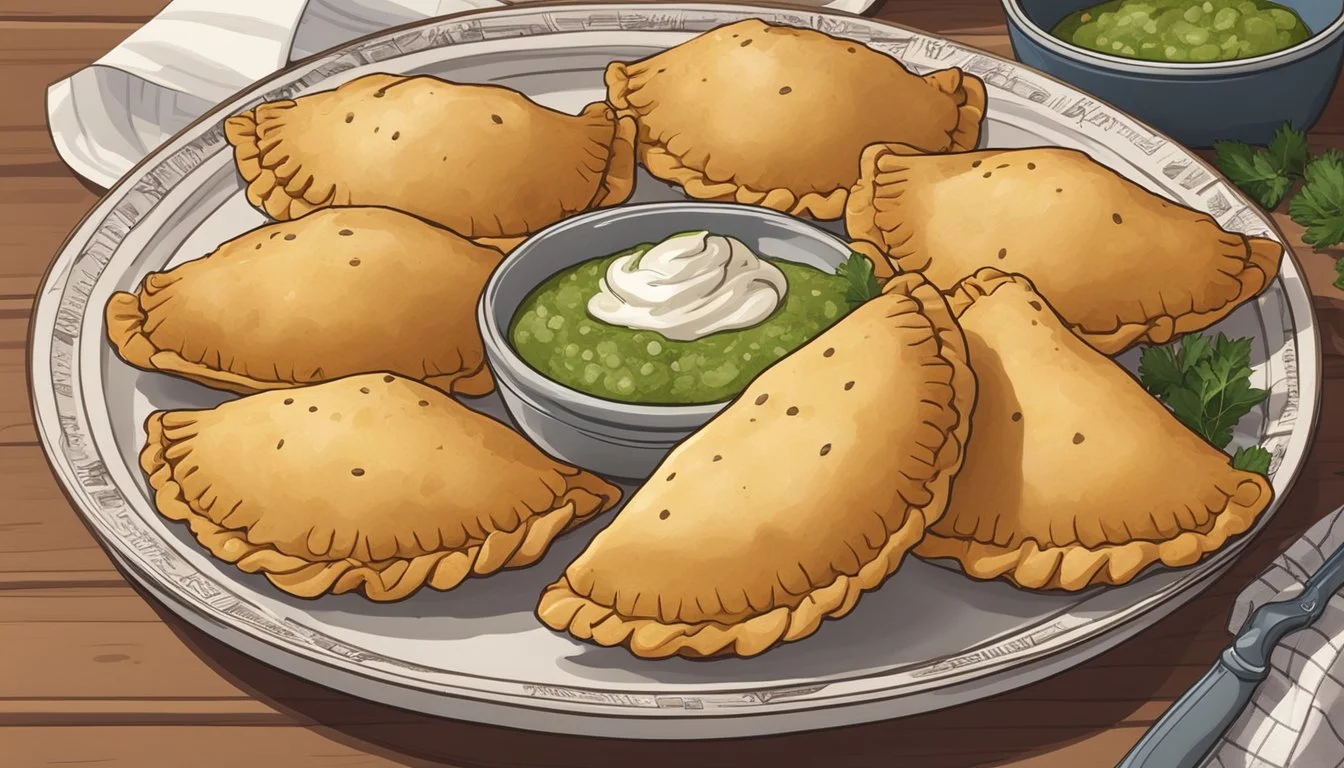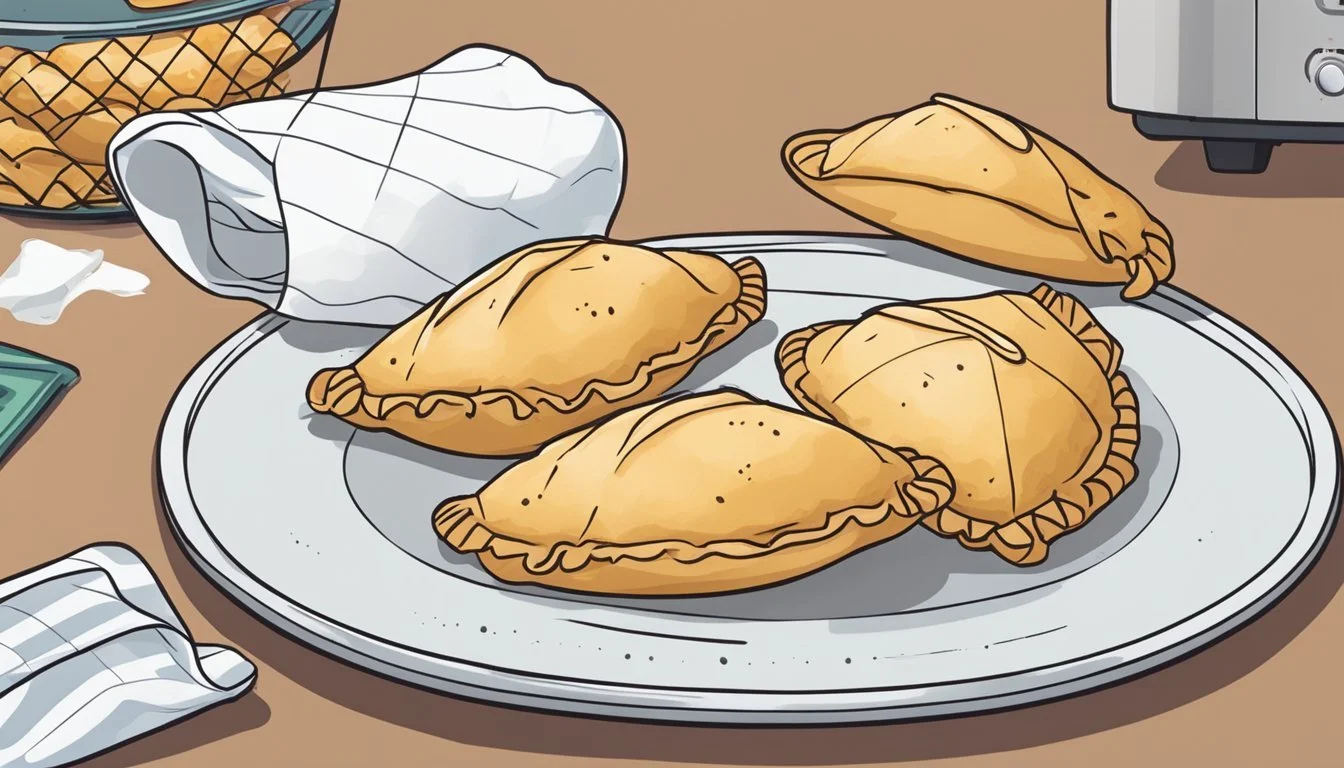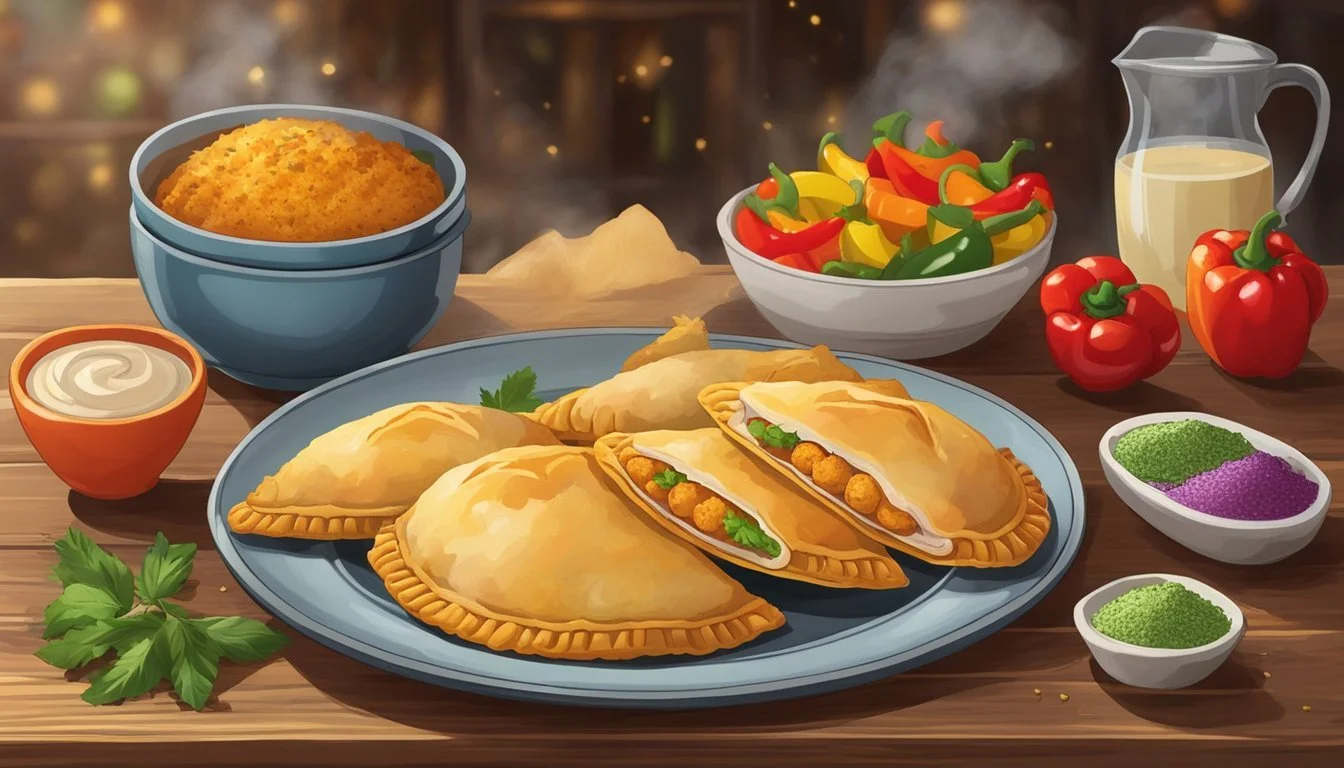How Long Do Chicken Empanadas Last
Storage Tips and Shelf Life
When it comes to savoring the deliciousness of chicken empanadas, understanding their shelf life is crucial for maintaining both quality and safety. Typically, chicken empanadas will last up to 3-4 days in the refrigerator when stored properly in an airtight container. This ensures that the filling and pastry remain fresh and enjoyable.
For longer storage, freezing is a viable option. Chicken empanadas can be frozen for up to three months without significant loss of quality. This makes it convenient to prepare large batches and enjoy them later. When ready to eat, simply reheat them in the oven or microwave for a quick and satisfying meal.
Proper storage practices are key to preserving the flavor and texture of chicken empanadas. By storing them correctly, you can enjoy their delightful taste well beyond the day they were made.
Understanding Empanadas
Empanadas are a versatile dish featuring dough filled with various ingredients, offering both sweet and savory options. They can be customized with different fillings and cooking methods to suit diverse tastes.
What Are Empanadas?
Empanadas are a type of turnover originating from Spain. They first appeared in 1520 in Catalonia and were introduced to other countries by Spanish colonists. These pastries can be baked or fried and are filled with a variety of ingredients, such as meat, vegetables, and seafood. Chicken empanadas, for instance, are popular for their juicy, tender fillings. Empanadas can serve as snacks, appetizers, or main dishes, depending on their size and filling.
Key Ingredients and Recipe
The key ingredients in a chicken empanada typically include shredded chicken, onions, peppers, and garlic. Spices and seasonings such as cumin, paprika, and salt enhance the flavor. For a creamy touch, some recipes incorporate cheese like Monterey Jack or cream cheese. The filling is encased in dough, which can be store-bought or homemade.
To prepare, sauté the onions, peppers, and garlic before adding the chicken and spices. Once the filling is cooked, it’s placed onto rolled-out dough circles**.** Fold the dough over the filling, sealing the edges before baking or frying. This process ensures a golden, crispy crust with a savory, flavorful center.
Homemade Empanada Dough
Homemade empanada dough creates a flaky and buttery crust. The primary ingredients include flour, butter, egg, and water. Start by mixing flour with a pinch of salt, then cut in cold butter until the mixture resembles coarse crumbs. In a separate bowl, whisk a cold egg with water and gradually add this to the flour mixture, forming a dough.
Once combined, the dough should be kneaded briefly before resting in the refrigerator. Chilling the dough helps achieve a tender, flaky texture. After resting, the dough is rolled out and cut into circles, ready to be filled and cooked. Making dough from scratch enhances the texture and flavor of the finished empanada.
Preparation Techniques
Proper preparation of chicken empanadas involves making the filling, forming and sealing the empanadas, and deciding between baking or frying your finished product.
Making the Filling
Start by cooking the chicken breast. Once cooked, shred the meat. Onions, garlic, and bell peppers should be diced finely and sautéed until they soften. Add the shredded chicken to the pan and mix well.
Season the filling with your choice of spices, such as cumin and salt. Stir for an additional minute to blend flavors. Let the mixture cool slightly before using it in the empanada wrappers.
Forming and Sealing Empanadas
Place about 2 tablespoons of the cooled chicken filling at the center of an empanada dough circle. Fold the dough over to create a half-moon shape. Press the edges together firmly to seal the empanada.
To ensure a tight seal, crimp the edges using a fork or finger pinching technique. This step prevents the filling from oozing out during cooking.
Baking vs. Frying
For a healthier option, bake empanadas by preheating the oven to 375°F. Arrange the empanadas on a baking sheet lined with parchment paper. Brush with egg wash for a golden finish and bake for about 18-20 minutes or until golden brown.
Alternatively, you can fry the empanadas for a crispier texture. Heat oil in a deep fryer or skillet to 350°F. Fry the empanadas in batches until they are golden and crispy, which takes about 3-4 minutes per side. Remove and drain them on paper towels to remove excess oil.
Storage Tips
Proper storage is crucial for extending the freshness and flavor of chicken empanadas. Use airtight containers and consider refrigeration or freezing based on when you plan to consume them.
Storing Baked and Unbaked Empanadas
Baked empanadas can be stored at room temperature for a short period, typically up to 4-6 hours. For longer storage, refrigeration or freezing is advisable.
Unbaked empanadas should be carefully wrapped in plastic wrap and placed in an airtight container to prevent moisture loss.
This helps maintain their texture and prevents them from drying out.
Refrigeration and Freezing Guidelines
Refrigerated chicken empanadas should be consumed within 3-4 days for optimal flavor and safety. Place them in a tightly sealed container to prevent moisture absorption and maintain their crispiness.
Freezing unbaked empanadas extends their shelf life significantly. Flash-freezing them on a baking sheet before transferring to an airtight container helps avoid sticking together.
Frozen baked empanadas can last up to 2 months. Reheat them directly from the freezer in an oven to regain their crisp crust.
Wrapping and Container Advice
For maximum freshness, use plastic wrap to cover each individual empanada before placing them in a container.
Avoid freezer burn by using high-quality airtight containers or heavy-duty freezer bags.
Moisture control is key; ensure the wrapping is tight to minimize exposure to air.
Reheating and Serving
Chicken empanadas can be a delightful treat when reheated properly and served with the right accompaniments. Following precise reheating methods ensures they remain as delicious as freshly made.
Proper Reheating Methods
To reheat chicken empanadas, several methods can be used, each tailored to maintain their crispy exterior and warm fillings:
Oven: Preheat the oven to 350°F. Place the empanadas on a baking sheet and bake for about 10-15 minutes. Check if they are heated through; if not, leave them for a couple more minutes.
Air Fryer: Set the air fryer to 350°F. Arrange the empanadas in a single layer. Cook for 7-10 minutes, flipping halfway for even heating. Lightly spritzing with cooking spray can enhance the crispiness.
Microwave: For a quick option, place empanadas on a microwave-safe plate and heat for 1-2 minutes. This method might soften the crust, so it’s less ideal if a crispy texture is desired.
Toaster Oven: Similar to the oven method, set to 300°F and reheat for about 10 minutes. Adjust the time as needed based on the size of empanadas.
Presentation and Accompaniments
Serving chicken empanadas with the right sides and presentation can elevate the dining experience:
Plating: Place empanadas on a decorative platter. Use a bed of lettuce or garnished herbs to add visual appeal.
Dips and Sauces: Guacamole, sour cream, or a spicy salsa can enhance flavors. Place these in small bowls alongside the empanadas for easy dipping.
Side Dishes: Serve as an appetizer with a side salad. For dinner, accompany with rice and beans for a fuller meal.
Accompaniment Ideas:
Guacamole: Adds a creamy texture and freshness.
Sour Cream: Provides a mild, cooling contrast.
Spicy Salsa: Offers a kick and complements the savory filling.
By following these methods and presentation tips, chicken empanadas can be reheated and served to impress at any meal or gathering.
Safety and Freshness
When storing chicken empanadas, understanding safety and freshness is crucial. Proper storage methods extend shelf life and maintain quality.
Recognizing Spoilage
Look for signs of spoilage to ensure the empanadas are safe to eat. Visible mold, an off smell, or a sour taste are clear indicators that the empanadas should not be consumed. Additionally, if the dough becomes slimy or discolored, it's time to discard them. Checking for these signs helps prevent the consumption of spoiled food that could cause foodborne illnesses.
Best Before and Use-by Dates
Pay attention to best-before and use-by dates on the packaging. These dates indicate the period during which the empanadas remain at their best quality. After the use-by date, the risk of contamination increases, and the nutritional value may diminish. Storing empanadas in the refrigerator can keep them fresh for up to 4 days. Proper labeling with the date of storage helps manage and consume them within a safe timeframe.
Creative Variations
When it comes to making chicken empanadas, there are numerous ways to experiment with flavors and ingredients to create unique and tasty versions. These include alternative fillings like beef, vegetables, or a mix of cheese, beans, and rice.
Alternative Fillings and Flavors
Beef empanadas stand out as a popular alternative. They can be made using ground beef, seasoned with cumin, paprika, and kosher salt. Combining the beef with tomato paste enhances its texture and moisture.
Vegetable fillings offer a lighter option. A mix of bell peppers, onions, and garlic, cooked in olive oil, delivers a fresh and vibrant taste.
Cheese, beans, and rice can be bundled together for a hearty, vegetarian filling. Pairing them with spices like cumin and paprika ensures a spicy kick.








